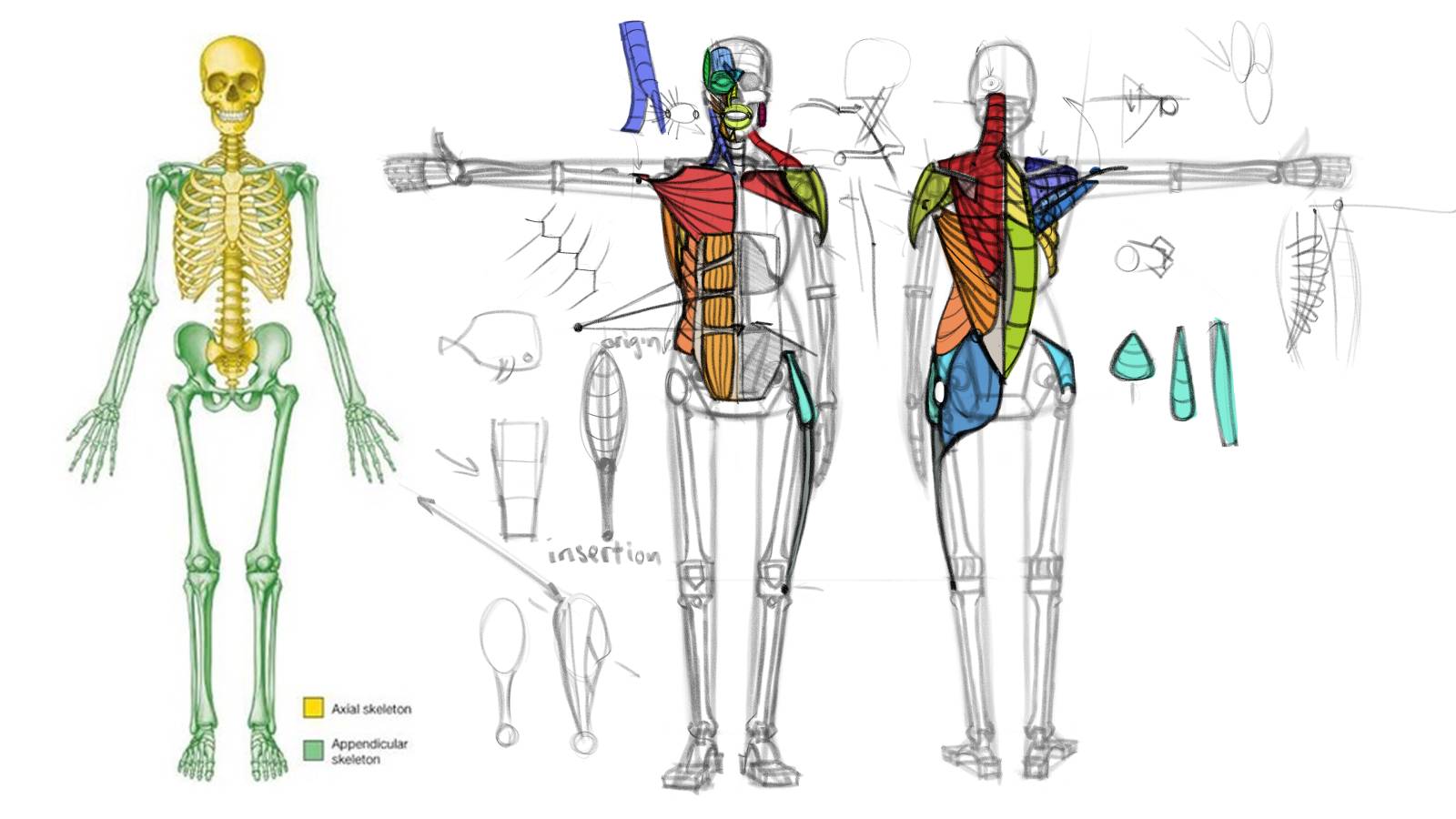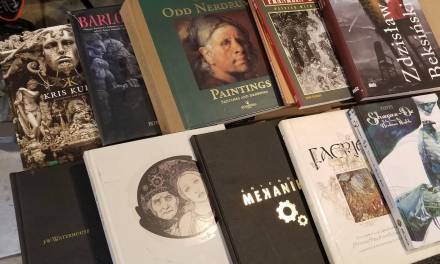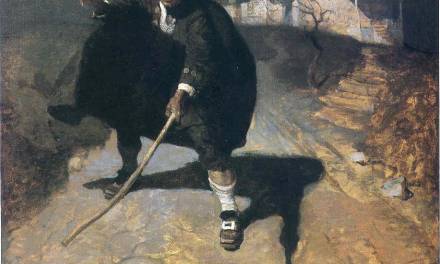When I was first learning this art thing there were many subjects that I just didn’t think would be all that important for me to be able to just sit down and create. But as I realized the more realistic something is depicted, the more tools I had to learn to capture that realism. Even when I was stylizing something that looked less and less realistic, I still needed to understand the logic of space, light, composition, design, and application of media. There was no escaping the rules and tools of art if I wanted to do it professionally.
My first love was comics and animation. At the time, the only books I could find on drawing the human form were a few tombs of muscles by Joseph Sheppard and Stephen Rogers Peck. The other book that was easy to find was How to Draw Comics the Marvel Way, where a chapter was dedicated to showing how to put bubble forms in where major muscles were supposed to go. It seemed helpful at first until I ran into trying to draw complex foreshortened poses, and then the bubble method fell apart. The Peck book was great because it had lots of helpful tips and shortcuts, but it was lacking in any explanations regarding the body in various actions and poses. Later I realized that the anatomy books were really there to assist students in their anatomy classes where a model would take a pose and from their vantage point they would work out the complexity using the books to assist in the placement of specific muscles.
Cross sections, and muscle forms from various angles were not explained in many of these books. If you could find a Bridgman book at the time, there were pages dedicated to showing the muscle forms in geometric design with cross sections to help envision the complex structures from various angles, but it would still help to have someone who knew the content to help make the correlation between what was in print and the problem at hand that needed a visual solution.
Anatomy classes were also very “book oriented”. Many of my early anatomy classes literally drew the same anterior, posterior, medial, and lateral parts at length with no regard to interpreting them in various angles or drawing an ecorchë from a live pose. I lived in an art desert at the time and did not realize that realistic art had not been taught for many decades, naïve in my thinking that I would take a class that would give me the necessary information to help me with my artistic goals.
It wasn’t until much later that I found “atelier” training, still not mainstream, but available if you lived in the right place, or you knew the right people who could direct you to them. When I moved to southern California where Hollywood still needed storyboarding, and illustration was thriving, there were a few of these ateliers available. They were not cheap, but they were still teaching all the tools of realism. I was fortunate to have been in the right place at the right time where one of the students of an atelier came in to demonstrate the art of drawing the figure realistically, in a fast and furious manner, effortlessly, and very much how I wanted my art to look and feel.
At one point in my lifetime it was near impossible to find, and now it seems easy to find and readily available in many media platforms. When I first learned to skateboard, I took full advantage of the video platform watching all the tricks, playing them in slow motion, pausing, scrolling frame by frame to analyze how they were done so I could replicate them. This media platform was gold for growth, although I was learning tricks that were older by the time the videos came out, it was still a way to connect to the sport when I was living in a place that was not caught up with the times.
This history with video is what inspired me to do the same with art once it was available with the likes of YouTube and other video channels on the internet. I have been doing YouTube videos for a long time. The first videos were just pure demonstration. I was afraid to speak into a microphone, and there was no way I would show my face in them. I was wrapped up in so many insecurities that held me back from making the content easier to do if I would have just been a part of the experience. I was also trying to meet the length of time that YouTube was recommending a content creator should stick to, making it that much harder to share and show how to do things that otherwise takes a healthy explanation and a lengthy demonstration to show it.
I have this show called Level Up with Lemenaid where I am trying to make it as experiential as I can, and I am not concerned with how long it takes to show what to do with whatever subject matter I am presenting. I am currently working with the figure, but this show will not be just about the figure. I am committed to sharing everything I know about all the artforms I do and have learned. I am trying to stick with under 2 hours if possible, but if an episode happens to take longer, I am fine with it. The videos are timestamped so you can head to whatever it is you need, making it easier to get to what you are looking for without having to wade through all the content. But I do recommend you watch them all the way through, as there is lots of additional tips and information that sometimes gets overlooked or is not discussed in many, if any videos out there.
In addition, I have a Discord channel where anyone can upload art for me to review on the videos. I do them on video so they can be an additional education for the would be artist to hear, the kind of helpful and productive information you would only get in a classroom setting. This latest video is touching on the muscle systems and how to add them to the skeleton. I also have a section in the video on how to draw people on location with some tips on how to make it easier to accomplish. I very much appreciate comments which lately do not seem to be as frequent with the Muddy Colors posts. I ask that you take the time to leave your thoughts, recommendations, and questions to help me be as thorough as I can with the new content as I move forward with each episode.
Thank you for reading through this and I hope you learn something new from the videos.








대전출장마사지로 쉽고 간편하게 집에서 경험해볼 수 있습니다.